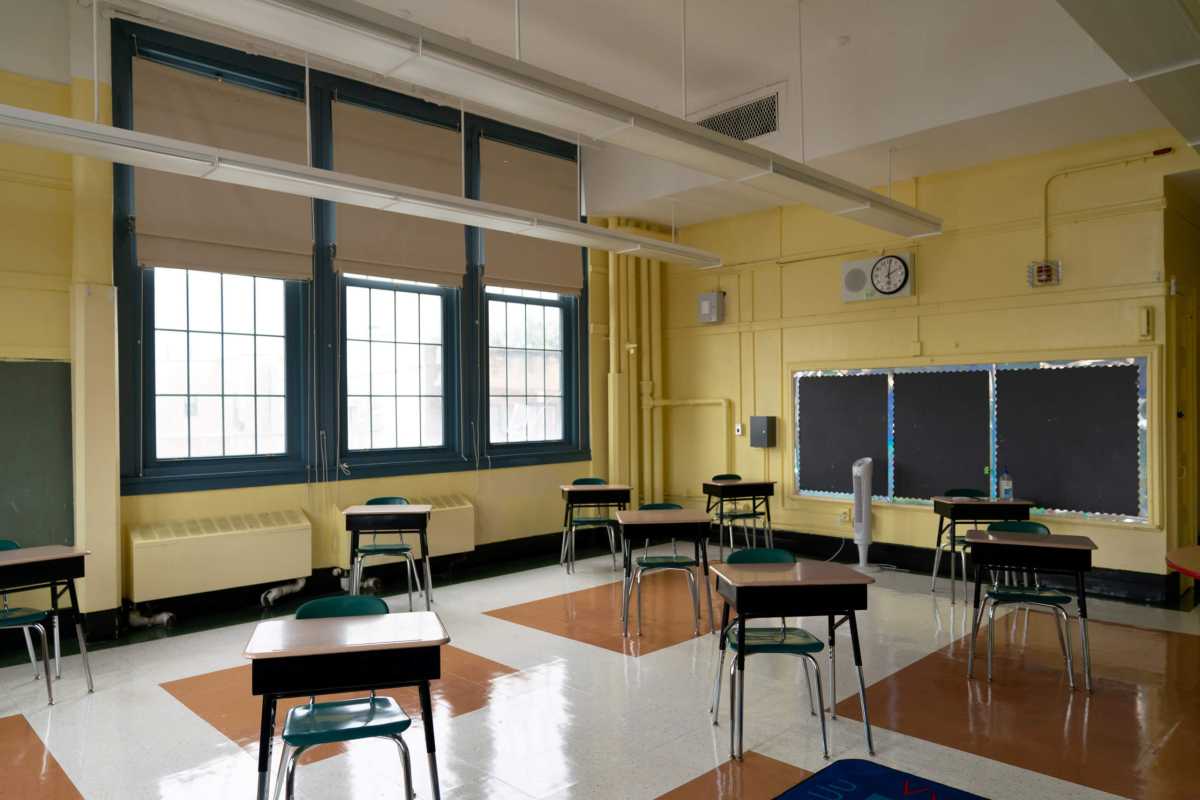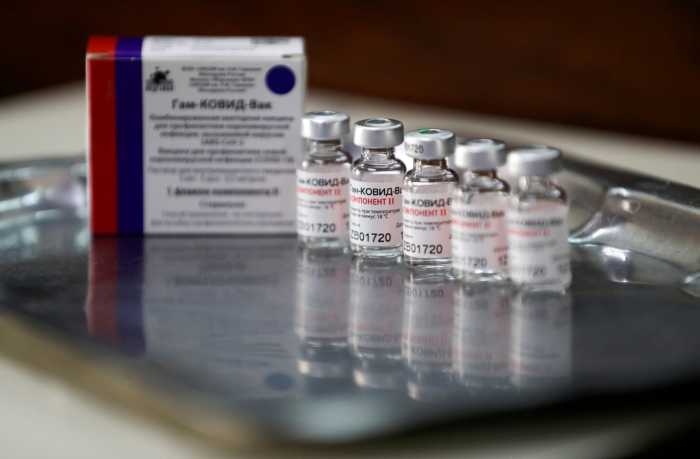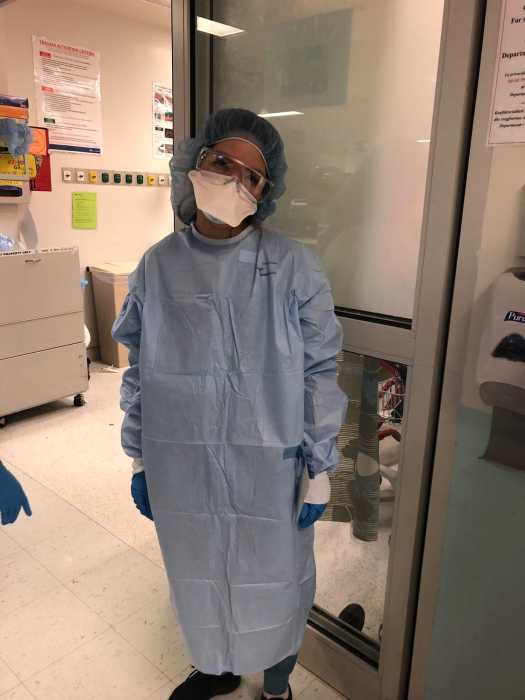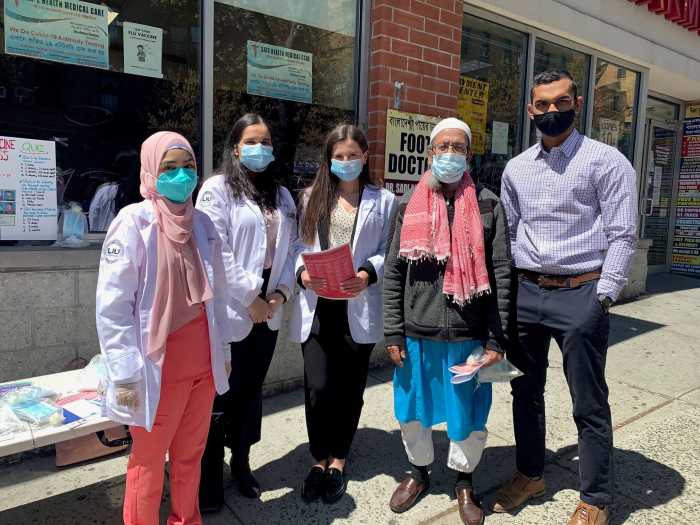This story was originally published by Chalkbeat. Sign up for their newsletters at ckbe.at/newsletters“.
At one high school in Brooklyn, hundreds of students were sent to the auditorium after about 50 teachers called out sick and not enough substitutes could be tapped to cover their classes.
At another school in the Bronx, just five out of 100 seniors showed up, forcing the school to resort to “Zoom in a room” with students on devices in largely empty classrooms.
In Harlem, a high schooler who decided to stay home out of fear of getting sick wasn’t given any assignments to complete. But there wasn’t much work to be done when she returned to school, either, since most of her teachers were out.
On Thursday alone, nearly 11,000 students and more than 2,200 staff reported testing positive, keeping them out of classrooms.
In his first week on the job, New York City Mayor Eric Adams has vowed to keep the nation’s largest school district open, arguing that working families depend on schools not just for academics but also for meals and other services. But inside classrooms, the days have been far from normal amid a surge in COVID cases that has left many teachers and students sick or in quarantine, some buildings understaffed, and many parents scared to send their children.
Far more school staff and students have reported testing positive for COVID since Dec. 24 than the rest of the school year combined. On Thursday alone, nearly 11,000 students and more than 2,200 staff reported testing positive, keeping them out of classrooms. On Friday, Chancellor David Banks acknowledged that staff attendance “has been lower than we wanted to see,” but education department officials have refused to provide specific numbers.
“There’s this idea that schools are open and learning is happening, but in every single one of those you’re dealing with people who are sick,” said Jeremy Ehrlich, a teacher at the Bronx’s New World High School, which predominantly serves students who are learning English.
Nearly two years into the pandemic, the decision to close schools, even for a brief period, remains fraught with emotion. Keeping classrooms open can provide much-needed support for students, both academic and emotional, and child care for working families.
But, with the more-transmissible omicron variant making it difficult to run schools, teachers and students across the city say the reality is far more complex than the “open versus remote” debate that has divided communities. Though school buildings are open, more than a quarter-million of the city’s 938,000 public school students have not engaged in school on any given day this week. And with so much emphasis on physical classrooms, the instruction students are receiving when they stay home is limited or non-existent.
Education department spokesperson Jenna Lyle defended the city’s approach to reopening.
“Our schools and dedicated educators have been creatively meeting the needs of their students this week and providing rigorous learning and supports that can’t be replicated outside the school building,” she said. “We’ve set up robust measures in place to immediately address any staffing issues and keep our doors open for the hundreds of thousands of children and families who rely on schools as a lifeline every day.”
Low student attendance takes a toll
Since students returned from winter recess on Monday, the city’s public school system has not cracked a daily attendance rate higher than 72%.
Rami Sigal, a senior at the Clinton School in Manhattan, said many of his peers are out. Three of his close friends, with whom he shares a table during the day, got COVID.
“I wouldn’t say anyone is really happy or engaged,” said Sigal, who also serves on his local community board and is the editor of the school newspaper.
Sigal said one of his teachers who recently caught the virus returned to work this week, despite the teacher still testing positive on a rapid test. They spent the class period keeping as much distance as possible between them.
The city education department declined to comment on the specific incident and didn’t answer a question about whether safety rules allow an asymptomatic teacher who tests positive at the end of a five-day quarantine to return, referring Chalkbeat to state health department guidelines. A state health department spokesperson said the teacher should have stayed at home for a full 10 days given the positive test result.
Jadeyn Madhere, a sophomore at Manhattan’s Art and Design High School, said she was glad to return to her classroom this week. Despite the spike in virus cases, she said she wouldn’t take a remote option if it were offered.
Her grades suffered during remote learning last year, but she has since made the honor roll. She’s also excited about attending art class, a favorite subject this year that wasn’t emphasized last year. On Wednesday, she enjoyed using oil pastels to draw a still life of marbles.

Still, the school felt off: Even though most of her teachers were present, more than a third of her classmates were out. “It felt kind of dull,” she said. “It would have been a better day if more people was there.”
Alan Sun, a sophomore at The Bronx High School of Science, said there has been little in-person learning this week. With many students out, his English class on Friday was devoted to independently reading “1984,” but many students simply dozed off. When teachers are absent, students are often funneled into the gym or cafeteria where students “just hang out, talk to our friends, we do homework, or look at our phones.”
He said the school’s atmosphere is sometimes uncomfortable, especially during lunch when students gather in the cafeteria unmasked with little social distancing. And under a new policy launched this week, students are given rapid tests to take at home if they’ve been in a room with someone who tests positive. Some are taking the tests in the bathroom before getting home, fearing that they might have been infected, Sun said.
“People test positive in the middle of all these people and it’s really uncomfortable,” he said.
For teachers, low attendance poses a difficult dilemma: press ahead with the curriculum for the students who are present or abandon lesson plans and review past material, so that absent students can catch up when they return?
“I think we could have planned better about how to prepare students mentally for this. Because everything is so unexpected, kids are having a hard time managing the stress.”
Donna McKenna, who teaches students who are recent immigrants in the Bronx, said her school is better suited than many when it comes to dealing with disrupted school days.
Even before the pandemic, students often missed class to work jobs or travel back to their home countries. The way the school plans lessons and grades students is designed to allow students to pick up where they left off and show mastery of skills and concepts rather than content.
With only five out of 100 seniors showing up to the building on Wednesday, the school has resorted to “Zoom in a room.” McKenna gives mini-lessons twice — first to the students in front of her and then to those tuning in online. Despite the effort to meet students virtually, McKenna said many aren’t tuning into classes.
“I think we could have planned better about how to prepare students mentally for this,” she said. “Because everything is so unexpected, kids are having a hard time managing the stress.”
Lesson plans disrupted
“It’s hard to teach core content when you’d have to re-teach it to a third of the class who is out once they’re back.”
Ehrlich, the teacher at the Bronx’s New World High School, said he has shifted away from offering lots of direct instruction because more than a quarter of his students stayed home this week, either due to quarantines or fear of getting sick. His classes have been repeatedly disrupted by quarantines. Ehrlich also was home sick the week before winter recess after testing positive for the coronavirus.
“It’s hard to teach core content when you’d have to re-teach it to a third of the class who is out once they’re back,” he said.
Jennifer Gorman, an English teacher at another high school in the Bronx, said low student attendance and her co-teacher’s absence shifted her teaching back to review mode. She’s focusing on going deeper on grammar rules, such as sentence fragments.
“Nobody is going to start ‘Romeo and Juliet’ in the middle of a staffing shortage,” she said.
Other teachers feel pressure to continue with the curriculum.
Robert Effinger, a high school social studies teacher in the Bronx, said he needs to forge ahead if he wants his students to have a shot at passing the Regents exam required for graduation — even while “crossing my fingers and my toes” that the state decides to cancel the tests like they did last year.
He said the “sporadic” absences of students make it particularly hard for those who have disabilities and may, for example, require access to a text the day before a lesson is presented. He also doesn’t want to push students who are sick.
“Listen, if a kid is really sick with COVID, do I really want them to think, ‘Oh I really have to get that social studies assignment done?’ No, I want them to get better,” Effinger said.
Online and in person – instruction suffers
Teachers are only expected to provide remote assignments and “office hours” for students who test positive for COVID. But many students — it’s unclear how many — have decided to stay home out of safety concerns or other reasons and aren’t entitled to remote instruction.
Multiple educators said they were overwhelmed by trying to keep up with planning lessons for students who are in person, using prep periods to cover for other teachers who are out sick, and posting work for students to complete online or setting up video conferences with them.
“It’s just very, very hard to do the remote instruction and the in-person instruction,” said Mike Loeb, a science teacher at the Urban Institute of Mathematics in the Bronx. “We’re just spread very thin.”
Loeb said he’s posting notes for his lessons on Google Classroom that any student can access regardless of why they’re staying home. But his class also features many labs, such as how different liquids refract light in various ways, which are difficult to replicate virtually.
He’s doing his best to give students the data they would have observed had they been in class, and even conducting video meetings with students. But he acknowledged he doesn’t have time to help every student online individually who requests it, especially those who are not isolating due to a positive test result.
Education department officials didn’t respond to a question about whether students who are home sick but haven’t tested positive for the coronavirus are entitled to any remote instruction. A spokesperson for the teachers union said they are in talks with the city about the rules governing remote instruction.
Mikhaela Reid, an East Flatbush mom, said she has kept her two children home amid the virus surge because she doesn’t trust the city’s safety protocols and is fearful that her family will contract the coronavirus for a second time. Her children, ages 6 and 11, have asthma.
She said her kids have been receiving assignments and even some one-on-one help from their schools. But there’s been no live teaching, leaving Reid and her husband to walk their younger child through most of his work.
“It’s hard to do anything asynchronous with kids his age and they’re basically offering parents different projects and worksheets,” Reid said.
The family doesn’t have a concrete set of criteria for sending their children back to school. Reid said she is worried that the city’s random testing protocol isn’t rigorous enough and that staff who test positive are allowed to return to their classrooms after five days without first showing a negative test.
“I don’t want someone who is contagious in close contact with my kid,” she said, adding that she also doesn’t want to slip into homeschooling. “I just want things to improve to a better level to feel safer.”
The schools chancellor said Friday that absences and mounting cases were to be expected given omicron. But he also projected confidence that infections would soon crest and students and teachers would be back in classrooms “over the next week or two.”
The school system will “start to make our way back to normal as this variant starts to subside,” Banks said. “But the main thing is that for all of our children who really need to be in school, they’re here.”
Reema Amin contributed to this story.
Chalkbeat is a nonprofit news site covering educational change in public schools.




















